Lecture
 In the general theory of teaching, the foundations of which, as noted above, were laid by Ya.A. Comenius, I.G. Pestalozzi, A. Dystervegom, in our country - KD Ushinsky, P.F. Kapterev, S.T. Shatsky, P.P. Nechaev, M.Ya. Basov, P.P. Blonsky, L.S. Vygotsky, as well as the largest representatives of the domestic and foreign educational psychology of the mid-twentieth century - D. B. Elkonin, V.V. Davydov, I. Lingart, I. Lompscher and other scientists, the psychological theory of learning activity was formed, the priority in the scientific development of which belongs to Russia. Its developers - D. B. Elkonin, V.V. Davydov, A.K. Markova, P.I. Halperin, N.F. Talyzin et al. (Http://www.pirao.ru/; see the website of the Psychological Institute of RAO).
In the general theory of teaching, the foundations of which, as noted above, were laid by Ya.A. Comenius, I.G. Pestalozzi, A. Dystervegom, in our country - KD Ushinsky, P.F. Kapterev, S.T. Shatsky, P.P. Nechaev, M.Ya. Basov, P.P. Blonsky, L.S. Vygotsky, as well as the largest representatives of the domestic and foreign educational psychology of the mid-twentieth century - D. B. Elkonin, V.V. Davydov, I. Lingart, I. Lompscher and other scientists, the psychological theory of learning activity was formed, the priority in the scientific development of which belongs to Russia. Its developers - D. B. Elkonin, V.V. Davydov, A.K. Markova, P.I. Halperin, N.F. Talyzin et al. (Http://www.pirao.ru/; see the website of the Psychological Institute of RAO).
“Educational activity” (UD) is a rather ambiguous concept. There are three main interpretations of this concept, adopted both in psychology and in pedagogy (see Fig. 1).
1. Sometimes UD is considered as a synonym for learning, teaching, and learning.
2. In the "classical" Soviet psychology and pedagogy, UD is defined as the leading type of activity in the primary school age. It is understood as a special form of social activity, manifesting itself with the help of objective and cognitive actions.
3. In the interpretation of the direction of D. B. Elkonin - V.V. Davydov's educational activity is one of the activities of schoolchildren and students, aimed at learning through dialogues (polylogs) and discussions of theoretical knowledge and related skills in such areas of public consciousness as science, art, morality, law and religion
The following is the interpretation of educational activities on Elkonin - Davydov.
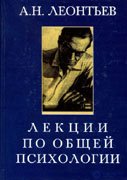
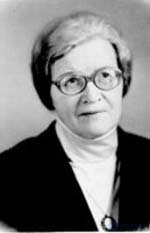 The concept of educational activity in psychology is one of the approaches to the process of learning that implements the provision on the socio-historical conditionality of mental development (Vygotsky LS, 1996; abstract). It took shape on the basis of the fundamental dialectical materialist principle of psychology - the principle of unity of the psyche and activity (Rubinstein S.L. 1999; abstract; Leontyev A.N., 2001; abstract) in the context of psychological activity (A.N. Leontiev) and in close connection with the theory of phased formation of mental activity and types of learning (P.Ya. Halperin, NF Talyzina) (see Fig. 2) (see Khrest.5.1). (http://www.psy.msu.ru/about/kaf/pedo.html; see the Department of Pedagogy and Educational Psychology, Faculty of Psychology, Moscow State University), (http://www.psy.msu.ru/about/kaf/ razvit.html; see the Department of Age Psychology, Moscow State University) ..
The concept of educational activity in psychology is one of the approaches to the process of learning that implements the provision on the socio-historical conditionality of mental development (Vygotsky LS, 1996; abstract). It took shape on the basis of the fundamental dialectical materialist principle of psychology - the principle of unity of the psyche and activity (Rubinstein S.L. 1999; abstract; Leontyev A.N., 2001; abstract) in the context of psychological activity (A.N. Leontiev) and in close connection with the theory of phased formation of mental activity and types of learning (P.Ya. Halperin, NF Talyzina) (see Fig. 2) (see Khrest.5.1). (http://www.psy.msu.ru/about/kaf/pedo.html; see the Department of Pedagogy and Educational Psychology, Faculty of Psychology, Moscow State University), (http://www.psy.msu.ru/about/kaf/ razvit.html; see the Department of Age Psychology, Moscow State University) ..
This problem was in due time before LS Vygotsky, who defined it as "the ratio of learning and development." However, the scientist only outlined ways to solve it. Most fully, this problem is developed in the concept of educational activities D. B. Elkonin, V.V. Davydov (Davydov VV, 1986; abstract; Elkonin DB, 2001) (see Ch. 5.2; 5.3).
Remaining within the framework of the cognitive paradigm, the authors of this concept developed an idea of the reference UD as a cognitive, built according to a theoretical type. Its implementation is achieved through the formation of theoretical thinking in students through the special construction of a school subject, a special organization of UD.
In other words, the student's subjectivity is manifested in his ability to reproduce the content, the path, the method of theoretical (scientific) cognition.
The concept of DM (as opposed to didactic concepts) laid the prerequisites for understanding the student as a subject of knowledge. The educational process itself is interpreted not as a translation of scientific knowledge, their assimilation, reproduction, but as the development of cognitive abilities, basic mental neoplasms . It is not knowledge itself that develops, but its special construction, which models the content of the scientific field, the methods of its knowledge.
The subject matter not only contains a system of knowledge, but in a special way (through the construction of the objective content) organizes the child’s knowledge of genetically initial, theoretically essential properties and relations of objects, conditions of their origin and transformations. The subject activity of the student (its focus, character of manifestation) is defined by the way the organization of cognitive activity, as if from outside. The main source of the formation and development of cognitive activity is not the student himself, but organized learning. The student is assigned the role of knowing the world in conditions specially organized for this. The better the learning conditions are created, the more optimal the student will develop. Recognizing the right of a student to be a subject of knowledge, the authors of this concept realize the realization of this right to the organizers of education, who determine all forms of cognitive activity.
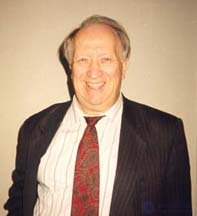 The organization of training, built on the theoretical type, according to. VV Davydov and his followers, the most favorable for the mental development of the child, therefore, the authors call such training developmental (Davydov VV, 1986; abstract). The source of this development lies outside the child himself - in training, and moreover, specially designed for this purpose.
The organization of training, built on the theoretical type, according to. VV Davydov and his followers, the most favorable for the mental development of the child, therefore, the authors call such training developmental (Davydov VV, 1986; abstract). The source of this development lies outside the child himself - in training, and moreover, specially designed for this purpose.
In the concept of V.V. Davydov's goal of education is presented more widely, and most importantly, more psychologically. This is not just a knowledge of the world that exists according to its objective laws, but a student’s appropriation of the social and historical experience accumulated by previous generations of people, the reproduction of an educational culture that includes not only knowledge, but also socially developed values, standards, and socially significant guidelines.
The formation of the basic concepts of an educational subject in the process of educational activity is constructed as a spiral movement from the center to the periphery , where the center contains an abstract-general idea of the concept being formed, and at the periphery this general concept is concretized, enriched by private notions and thereby turns into a genuine scientific theoretical concept.
Such structuring of educational material is fundamentally different from the commonly used linear method (inductive), when training goes from consideration of particular facts and phenomena to their subsequent empirical generalization at the final stage of the study of a particular concept. This general idea, which arises at the final stage, does not direct and does not help him in studying private ideas and concepts and, moreover, it cannot be developed and enriched, as it appears at the end of the learning process (http: //www.pirao .ru / strukt / lab_gr / g-postr.html; see group of construction of school textbooks) ..
Otherwise, there is a learning process through learning activities. Introduced at the initial stage of studying the fundamental concept, an abstract general concept of this concept is further enriched and specified by particular facts and knowledge, serves as a guide for students during the whole process of learning this concept and helps to comprehend all the particular concepts introduced in the future available overall view.
The essence of UD is that its result is a change in the student himself, and the content of UD is to master the generalized ways of action in the field of scientific concepts. This theory was further developed as a result of many years of experimental research carried out under the guidance of D. B. Elkonin and V.V. Davydov, who proved that the possibilities of younger schoolchildren in mastering scientific and theoretical knowledge were underestimated, that such knowledge was completely accessible to them. Therefore, scientific, rather than empirical, knowledge should be the main teaching content; training should be directed to the formation of theoretical thinking in students.
The systematic implementation of educational activities contributes to the intensive development of theoretical thinking among its subjects, the main components of which are substantial abstractions, generalizations, analysis, planning and reflection. Learning activities cannot be identified with those processes of learning and learning that are included in any other activities (in play, work, sports, etc.). Educational activity involves the assimilation of theoretical knowledge through discussions carried out by schoolchildren and students with the help of teachers and lecturers. UD is implemented in those educational institutions (schools, institutes, universities) that are able to provide their graduates with a sufficiently complete education and that are aimed at developing their abilities that enable them to orient themselves in various spheres of public consciousness (until now UD is poorly represented in many Russian educational institutions)
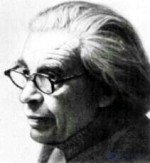 According to D.B. Elkonin, who was one of the first to begin developing a theory of DD,
According to D.B. Elkonin, who was one of the first to begin developing a theory of DD,
Learning activity is first of all such activity, as a result of which changes occur in the student. This is an activity of self-change, that is, the product is the change that occurred during its implementation in the subject itself (see Fig. 4).
Educational activity, as already indicated, is an activity directed, with its content mastering generalized methods of action in the field of scientific concepts. It should be prompted by adequate motives. They can only be motives directly related to its content, i.e. motives for the acquisition of generalized methods of action, or, more simply, the motives of their own growth, their own improvement. Personal success, personal improvement thereby acquires a deep social meaning (Elkonin DB, 1974. p. 18-46).
It is known that people will receive knowledge and skills not only at school and not only as a result of educational activities, but also when reading books, magazines, from radio and television programs, watching movies and going to the theater, from stories of parents and peers, also in play and work activities. Therefore, it is legitimate to raise the question of what kind of knowledge, in what way and under what conditions the child should be assimilated at school, under the guidance of the teacher who organizes the AP.
The assimilation of knowledge, skills and abilities within the DD has a number of characteristic features.
Firstly , the content of CA is made up of scientific concepts and laws, universal ways of solving the corresponding cognitive tasks.
Secondly , the assimilation of such content acts as the main goal and the main result of the activity (in other activities, the mastering of knowledge and skills acts as a side effect).
Thirdly , in the process of UD a change occurs in the student himself as her subject, the child’s mental development occurs due to the acquisition of such a basic neoplasm as a theoretical attitude to reality. The product of training activities are those changes that occurred during its implementation in the subject itself (see Fig. 5).
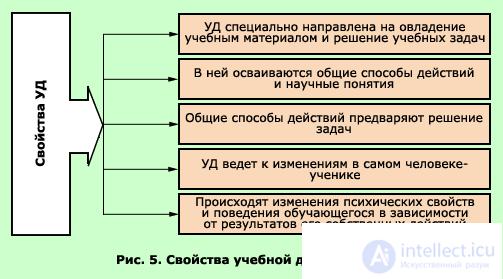
The task of the school is not just the development of the mental activity of schoolchildren, but the upbringing of the level of thinking that is most conducive to the orientation of a person in modern forms of consciousness. This requirement corresponds to the theoretical level of thinking. The latter is not ensured with traditional education, when pupils learn only certain ways of solving specific tasks and when they are given a ready amount of personal knowledge for this. The thinking of schoolchildren rises to the theoretical level in the formation of their learning activities, as it is understood in the concept of CA. This activity aimed at solving a learning task has its own special needs and motives, its own special structure, in which the most important place belongs to specific learning tasks and actions.
5.2.1. Determining the structure of educational activities
The structure of the CA is determined by the nature of the interaction of its elements. Regarding the basic structural elements of AP, there is still no consensus in educational psychology. Below are some points of view.
A closer look at the point of view of V.V. Davydov. In his opinion, one of the most important components of educational activity is the understanding of the schoolchildren’s learning tasks (KS) . The learning task is closely related to the substantive (theoretical) generalization, it leads the student to master the generalized relationships in the area of knowledge being studied, to master new ways of doing things. The adoption of school students "for themselves" and self-staging are closely related to the motivation of learning, with the transformation of the child into a subject of activity. The next component is the implementation of schoolchildren learning activities . With proper organization of the teaching, schoolchildren’s learning activities are aimed at highlighting general relations, leading principles, key ideas of this field of knowledge, modeling these relations, mastering ways of transition from general relations to their concrete definition and back, ways of transition from model to object and back and so on. .d
No less important, according to V.V. Davydov, has the implementation of the student action monitoring and evaluation. The control part tracks the progress of the action, compares the results with the specified samples and, if necessary, provides correction for both the approximate and the executive parts of the action.
Потребностью УД является стремление учащихся к усвоению теоретических знаний из той или иной предметной области (эти знания отражают закономерности происхождения, становления и развития предметов соответствующей области; эмпирико-утилитарные знания в отличие от теоретических фиксируют лишь признаки уже ставших предметов).
Учебная задача . Специфика учебной задачи состоит в том, что при её решении учащиеся посредством учебных действий открывают и овладевают общим способом (принципом) решения целого класса однородных частных задач. Поставить перед учащимися учебную задачу - значит ввести их в проблемную ситуацию, требующую ориентации на содержательно общий способ её решения во всех возможных частных и конкретных условиях.
Учебная задача - не просто задание, которое выполняет ученик на уроке или дома, это цель по овладению обобщенными способами действий, задача, которая ставится перед учащимися в форме проблемы. Учебная задача отличается от конкретно-практической задачи тем, что целью второй является получение результата-ответа, а целью первой является овладение учеником общим способом решения всех задач данного вида.
Работа учащихся по решению учебных задач осуществляется с помощью особых учебных заданий, требующих от учащихся в явном виде проведения исследования, анализа, самостоятельного изучения каких-то явлений, построения каких-то способов изучения или фиксации результатов в виде моделей этих явлений и способов их изучения. Работа учащихся над этими заданиями носит теоретический характер и вводит их, тем самым, в лабораторию научной мысли, помогает им приобрести опыт подлинно творческого мышления и в то же время приносит им радость познания, эмоциональное удовлетворение от преодоления всех трудностей, которые им встретились на пути выполнения этих заданий.
Мотивы учебной деятельности. В мотивах учебных действий конкретизируется потребность УД, когда общее стремление учащихся к усвоению теоретических знаний направлено на овладение вполне определенным общим способом решения некоторого класса частных задач.
Учебные действияWith the help of which learning tasks are solved, they are accomplished with the help of many different learning operations. In order for students to learn how to perform learning activities, you must first perform these actions with full deployment of all operations that are part of this action. At the same time, these operations must first be carried out either financially with the help of some objects, or materialized with the help of their iconic substitutes, images. Only gradually, as these or other operations are worked out, the process of performing the action is curtailed and finally it is executed immediately as a single action.
The essence of educational actions will be considered in more detail.
Анализ любого типа деятельности предполагает вычленение и описание взаимосвязи следующих структурных компонентов - потребностей, мотивов, задач, действий и операций. При этом психология установила следующие закономерности формирования и функционирования различных видов деятельности (Давыдов В.В., 1986; аннотация):
Во-первых , существует процесс возникновения, формирования и распада любого конкретного вида деятельности (например, учебной).
Во-вторых , ее структурные компоненты постоянно меняют свои функции, превращаясь друг в друга (например, потребности конкретизируются в мотивах, действие может стать операцией и наоборот).
В-третьих , различные частные виды деятельности взаимосвязаны друг с другом в едином потоке человеческого поведения (поэтому, например, подлинное понимание учебной деятельности предполагает раскрытие ее взаимосвязи с игрой и трудом, со спортом и общественно-организационными занятиями и т.д.).
В-четвертых , каждый тип деятельности первоначально возникает и складывается в своей внешней форме как сеть развернутых взаимоотношений между людьми, использующими различные материальные и материализованные средства организации своего общения и обмена опытом; лишь на этой основе формируются внутренние формы деятельности отдельного человека, свернутые в своей структуре и опирающиеся на образы и понятия.
Действие, которое должно быть передано самим учащимся для самостоятельного выполнения, - это оценка, т.е. "установление того, усвоено ли или еще не усвоено то или иное учебное действие" .
Поэтому уровни зрелости УД в целом и ее отдельных компонентов есть важные качества характеристики эффективности труда учителя и школьника.
Развернутый процесс обучения сложным учебным действиям применяется и к обучению действиям по решению класса конкретных задач. Такой способ обучения действиям позволяет проводить контроль за правильностью и полнотой выполнения операций, входящих в состав действий. Но вопрос о контроле и оценке учебной работы учащихся мы рассмотрим особо в следующем разделе/
На первом этапе , соответствующем начальному образованию, возникают и формируются основные компоненты структуры УД (у дошкольников имеются только их предпосылки). В младшем школьном возрасте УД является главной и ведущей среди других видов деятельности. Систематическое осуществление младшими школьниками УД способствует возникновению и развитию у них основных психологических новообразований данного возраста.
Уже в 1-м классе в содержание УД необходимо вводить элементарные теоретические знания - понятия числа и слова, отсутствовавшие в опыте дошкольной жизни детей, а также понятие композиции, важное для последующего овладения детьми основами изобразительного искусства. Усвоение этих и других понятий в процессе коллективного решения учебных задач способствует вхождению детей в систему учебных действий, позволяет им осваивать способы и нормы участия в спорах и дискуссиях, проявлять инициативность в приглашении к учебному диалогу сверстников и учителя. На протяжении всего начального образования в условиях полноценной и развёрнутой УД она остаётся коллективно распределённой, но при этом у большинства младших школьников складываются умения по собственной инициативе ставить различные содержательные вопросы сверстникам и учителям, умения не только участвовать в дискуссиях, но и быть их инициаторами и даже организаторами. У детей появляются устойчивые и обобщённые учебно-познавательные мотивы (основным показателем этого является ориентация детей не на результат решения задачи, а на общий способ его получения), что свидетельствует о формировании самой потребности в УД. К концу начального обучения у детей появляется способность сознательно контролировать свои учебные действия и критически оценивать их результаты.
At the second stage of formation, a DD (6-9th grades) loses its leading character, but retains essential importance in the development of theoretical thinking of students, which occurs in the process of reflexive assimilation, etc., allowing them along with teachers to take a certain part in UD organizations of their peers. At this age, the content of the DD is complicated - the whole systems of theoretical concepts, described in abstract language with the use of graphs, tables, and models, become the subject of mastering. The presence of a sufficiently high level of theoretical thinking achieved by adolescents in the lower grades contributes to their mastering complex material. In the performance of training activities are significant changes. In grades 5-7, students still collectively solve learning tasks and at the same time master various sign models of fixing their conditions and orientations in them, in order to use these models later on their own to solve problems individually. In the 8th and 9th grades, students gradually begin to independently formulate learning tasks and independently assess their decisions. Each student becomes an individual subject of teaching. His learning activity takes the form of an internal dialogue with the authors of the educational material, and discussion of the results in the classroom becomes such a discussion, when each participant can make adjustments to the proposed understanding of the learning task and to the ways of solving it.
In the process of internalization of UD in adolescents, when they master the theoretical material, all educational activities are worked out and polished (monitoring and evaluation, turning into self-control and self-esteem are of particular importance) and all meaningful mental activities functioning in them, among which reflexion takes on a special role. Thus, in adolescence, the process of development of theoretical thinking continues, which began in the elementary grades. At this age, the DD loses its leading character; the main role in the mental development of adolescents is acquired by socially significant activities in all forms (artistic, sports, labor). But in the field of mental development in adolescence decisive importance belongs to UD.
The third stage . At senior school age, UD becomes the leader again, but with a professional bias that allows high school students to exercise professional orientation and plan their way of life.
In his student years UD acquires its own research character and can be called as educational and cognitive activity. The assimilation of already accumulated theoretical knowledge is woven into the process of self-formulation of the results of individual or collective research, design and engineering, produced in accordance with the requirements of various forms of knowledge, which leads students to refine scientific concepts, to improve artistic images, deepen moral values, etc. . UD for students becomes the basis for the development of predictive and research theoretical thinking.
| Age | Features of educational activities |
|---|---|
| Younger school age | It is marked by the introduction of the student in the UD, mastering all its components; AP has a leading value here. |
| Middle school age | There is a development of arbitrariness of UD, mastering by the child of its general structure, awareness of the individual characteristics of their educational work, the use of UD as a means of organizing their interaction with other schoolchildren. |
| Senior school age | It is characterized by the use of UD as a means of vocational guidance and vocational training, mastering the methods of self-directed UD and self-education, as well as the transition from mastering the socially developed experience of UD to its enrichment, i.e. creative research cognitive activity |
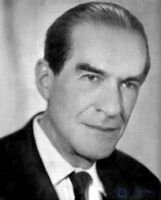 Human mental development at all age levels is carried out in the process of various activities. It is in his activity that he masters the social and historical experience accumulated by mankind - he assimilates knowledge, skills and abilities and acquires psychic properties and abilities peculiar to man. However, not all activities have the same value for mental development. According to A.N. Leontyev, activity in general does not add up mechanically from individual types of activity. Some activities at this stage play a major role in development, others are subordinate and play a secondary role (Leontyev A.N., 2001; abstract).
Human mental development at all age levels is carried out in the process of various activities. It is in his activity that he masters the social and historical experience accumulated by mankind - he assimilates knowledge, skills and abilities and acquires psychic properties and abilities peculiar to man. However, not all activities have the same value for mental development. According to A.N. Leontyev, activity in general does not add up mechanically from individual types of activity. Some activities at this stage play a major role in development, others are subordinate and play a secondary role (Leontyev A.N., 2001; abstract).
The main type of human activity that determines the very emergence and historical development of man, the formation of his consciousness is labor; it is an activity aimed at the production of certain socially useful (or, at least, consumed by society) products — material or ideal. Other activities, such as playing, teaching, communicating, have arisen in the course of history in close connection with work, partly as serving work, and partly as forms of preparation for it. In modern society, along with labor, the main activities are play and learning.
These basic activities do not exhaust, however, all its wealth and not all age levels have the same value. Labor in its mature forms is inaccessible to the child, and as for play and learning, each of these activities acts as a leader only at a certain age level, while at other age levels other activities are leading.
Leading activity, by definition, A.N. Leontiev is not just an activity most often encountered at this stage of development, an activity to which a person gives the most time. It is characterized by three main features (A. AN Leontiev, 2001; abstract).
1. Inside the leading activity, other, new types of activity appear and develop, which themselves can acquire leading value in the future, at the next age level. Thus, the teaching initially appears in the form of a game: the child begins to learn by playing.
2. In the leading activity separate mental processes are formed and develop. In particular, figurative thinking and active imagination are formed in the game, and abstract logical thinking is in the teaching.
3. From the leading activity depends on the formation of the child's personality, its main changes in this period. For example, it is in a game that a preschooler, on the one hand, masters social functions and the corresponding norms of adult behavior ("how can a worker, a teacher, etc.") and, on the other hand, learn to establish relationships with peers, to coordinate with them actions .
At the beginning of its formation, learning activity is possible only on the basis of the setting of learning tasks by the trainers, who also perform the functions of monitoring and evaluation. Developed forms of DD imply the transition of control and evaluation to self-control and self-esteem, self-specifying of goals set from outside.
The structure of UD is formed in children of primary school age (preschoolers have only its prerequisites, one of which is preschool educational interest). At this age, UD is the main and leading among other activities (artistic, gaming, sports, etc.).
Psychological and pedagogical studies show that with the existing system of primary education in Russia, UD by the time of the end of primary school (that is, by 9-10 years of a child’s life) still does not acquire a truly individual form. The problem arises of prolonging it for one or two years so that at the end of primary school age the child will have a desire and ability to learn, i.e. the need for DD and the possibility of its individual implementation.
In subsequent ages, which correspond to certain levels of education (adolescence - primary school; early adolescence - high school; adolescence - higher education), UD undergoes qualitative changes in the content of theoretical knowledge acquired by students, in the nature of its implementation, in the ways of organization UD teachers and teachers, for their role in the formation of psychological neoplasms inherent in each age
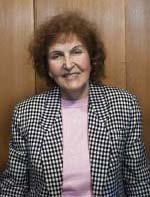

When diagnosing schoolchildren’s learning activities, it is important to look at the integrity of this activity (or only fragmented links and operations are available), whether there is a pronounced individuality of its performance. The free and independent implementation of learning activities indicates a certain important level of mental development - the formation of cognitive activity as the basis of thinking. In school practice, it is proposed to take into account when assessing the results of the exercise, not only knowledge, but also the activities of the students that provide them. Thus, the requirements for learning outcomes include: a system of knowledge and skills; the types of activities in which the mastering of the subject content of education is carried out; Qualitative features of students learning the subject and activity content of training /
The state of the activities of the student can be identified by criterion-oriented tests, activity tests, long-term observation, as well as during a psychologically thought-out oral survey and in written examinations.
Summary
Comments
To leave a comment
Pedagogical psychology
Terms: Pedagogical psychology